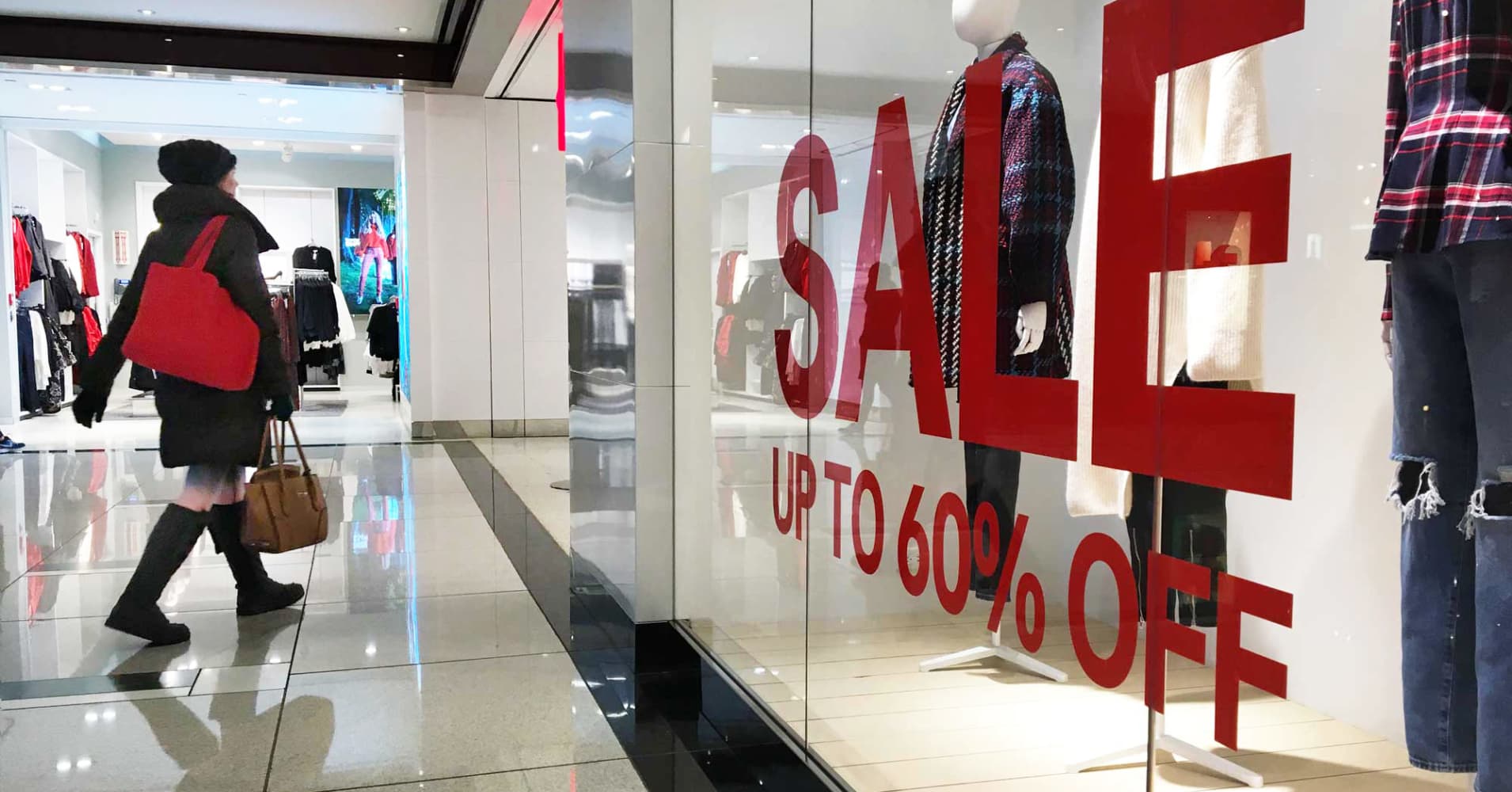WASHINGTON (Reuters) - U.S. retail sales unexpectedly fell in February, the latest sign economic growth has shifted into low gear as stimulus from $1.5 trillion in tax cuts and increased government spending fades.
FILE PHOTO: People shop at Macy's Department store in New York City, U.S., March 11, 2019. REUTERS/Brendan McDermid/File Photo
There was, however, some encouraging news on the economy. Other reports on Monday showed a pickup in manufacturing activity in March and the third straight monthly increase in construction spending in February. Still, the risks to economic growth in the first quarter remain tilted to the downside.
The loss of momentum also reflects higher interest rates, slowing global growth, Washington’s trade war with China and uncertainty over Britain’s departure from the European Union.
These factors contributed to the Federal Reserve’s decision last month to abruptly end its three-year campaign to tighten monetary policy. The U.S. central bank abandoned projections for any interest rate hikes this year after increasing borrowing costs four times in 2018.
“The consumer is lost in the woods and this makes for a gloomy economic outlook this year if they cannot find their way,” said Chris Rupkey, chief economist at MUFG in New York. “The Fed was wise to move to the sidelines.”
Retail sales dropped 0.2 percent as households cut back on purchases of furniture, clothing, food and electronics and appliances, as well as building materials and gardening equipment. Data for January was revised higher to show retail sales increasing 0.7 percent instead of gaining 0.2 percent as previously reported.
Economists polled by Reuters had forecast retail sales rising 0.3 percent in February. Retail sales in February advanced 2.2 percent from a year ago.
The surprise drop in sales in February could partly reflect delays in processing tax refunds in the middle of the month. Tax refunds have also been smaller on average compared to prior years following the revamping of the tax code in January 2018. Cold and wet weather could also have hurt sales.
The February retail sales report was delayed by a 35-day partial shutdown of the federal government that ended on Jan. 25. March’s retail sales report, which was scheduled for publication on April 16, will be released on April 18.
The dollar was trading lower against a basket of currencies, while Treasury prices were down. U.S. stocks rose.
Excluding automobiles, gasoline, building materials and food services, retail sales fell 0.2 percent in February after an upwardly revised 1.7 percent surge in January. These so-called core retail sales correspond most closely with the consumer spending component of gross domestic product.
DEMAND WEAKENING
They were previously reported to have rebounded 1.1 percent in January. Consumer spending accounts for more than two-thirds of economic activity. The sharp upward revision to core retail sales in January was insufficient to reverse December’s more than 2.0 percent plunge, leaving expectations for tepid GDP growth in the first quarter intact.
Growth estimates for the January-March quarter are as low as a 0.8 percent annualized rate. The economy grew at a 2.2 percent rate in the fourth quarter after expanding at a 3.4 percent clip in the July-September period.
But green shoots are emerging in some sectors of the economy. In a separate report on Monday, the Institute for Supply Management said its index of national factory activity rose to a reading of 55.3 in March from 54.2 in February, which had marked the lowest level since November 2016.
The reading was slightly above expectations of 54.5 from a Reuters poll of 69 economists. A reading above 50 indicates expansion in the manufacturing sector and a reading below 50 indicates contraction.
Another report from the Commerce Department showed construction spending rose 1.0 percent to a nine-month high in February after surging 2.5 percent in January.
The February retail sales report showed receipts at building materials and garden equipment and supplies dealers tumbled 4.4 percent, the biggest drop since April 2012. Receipts at clothing stores fell 0.4 percent and those at furniture outlets dropped 0.5 percent.
Sales at food and beverage stores declined 1.2 percent, the biggest drop since February 2009. Receipts at electronics and appliances stores fell 1.3 percent, the largest decline since May 2017.
But consumers bought more motor vehicles, with sales at auto dealerships rebounding 0.7 percent after declining 1.9 percent in January. Households also spent more at service stations, likely reflecting higher gasoline prices.
Online and mail-order retail sales rose 0.9 percent. Sales at restaurants and bars edged up 0.1 percent and spending at hobby, musical instrument and book stores increased 0.5 percent.
Slowing demand was highlighted by a fourth report from the Commerce Department showing business inventories rose 0.8 percent in January.
Reporting by Lucia Mutikani; Editing by Andrea Ricci
https://www.reuters.com/article/us-usa-economy/weak-february-us-retail-sales-underscore-slowing-economy-idUSKCN1RD2CK
2019-04-01 14:31:45Z
52780257265846


